Last month, the CDC pulled an about-face on its masking guidelines surrounding the COVID-19 pandemic. Though the agency initially indicated that masks were not necessary for the general public, since March the CDC has been recommending that individuals that expect to be out in their community in situations where normal social distancing guidelines are difficult to maintain—think trips to the grocery store, pharmacy or post office—wear masks to help reduce the risks of transmitting the coronavirus.
And, by and large, Americans seem to be heeding this advice. A few weeks ago, a masked person in the grocery store or walking down the street stuck out like a sore thumb. More recently, folks without a mask are the ones that call others' attention.
The inevitable result of this has been a high demand for masks. This, unfortunately, has led to additional pressure on supplies of surgical and N95 respirator masks that are crucial for healthcare workers, despite the CDC specifically instructing Americans not to use those types masks. Instead, the CDC says, Americans should be using homemade masks made from materials they can find around the house. The agency has even released a video and created a webpage instructing people how to make masks from everyday items like bandanas, spare fabric, and old t-shirts.
For anglers and hunters, who regularly don fabric face and head coverings—whether you call them face masks, neck gaiters, sun shields or something else—to protect themselves when headed out for long days in the sun, the hope would be that these would be ready to serve double-duty as COVID-19 masks. If you're like us, given the regularity with which face masks are given away as branded souvenirs, you already have a drawer full of them waiting to be put in service to help flatten the coronavirus curve.
Unfortunately, given the way that fishing gaiters/face masks are constructed, they're not ideally suited to masking designed to help slow the spread of COVID-19. If you're thinking about using your fishing or hunting face masks for COVID-19 masking, here are some things to keep in mind.
Tightly Woven Fabrics Work Best
For masking, the CDC recommends using cotton, specifically "tightly woven cotton" (think pillow cases, quilting fabric or sheets with high thread counts) because those fabrics are more adept at blocking the transmission of particles when you exhale. The face masks we wear when standing on the bow of a skiff or trudging along a sun-baked summer stream are typically made of synthetic fibers like polyester and are designed to offer as much breathability as possible while providing sun protection. By design, they're not good at keeping things in—things like coughs, sneezes and so on.
Dr. Scott Segal, who studied the effectiveness of homemade masks, recently told the NY Times, "Hold it up to a bright light ... If light passes really easily through the fibers and you can almost see the fibers, it’s not a good fabric. If it’s a denser weave of thicker material and light doesn’t pass through it as much, that’s the material you want to use.” Other doctors and disease experts have offered similar advice
We performed this basic light test on over a dozen different fishing face masks—from premium, name brand offerings to cheapo, giveaway "branded fabric things"—and not a single one passed. Nor did we expect them to. Again, they're designed for maximum breathability—some even with a matrix of breathing holes where the mask covers your mouth and nose.
They're harder to safely remove
Whether you're reading the CDC's official guidelines or those of state and local health departments, you'll likely find instructions that caution mask wearers not to touch the front or edges of the mask after securely fitting the mask until it's time to remove it. When that time comes, officials urge that only the ear straps of a mask should be touched.
Removing a neck gaiter / face mask? Well, we know how that goes. Something akin to pulling off a wet sock. Not a low-contact activity, to say the least.
My Mask Protects You, Your Mask Protects Me
When making any decisions about what mask to wear, remember that the purpose of you wearing a mask is to protect others. While you may feel comfortable wearing no mask, or wearing a less-than-adequate mask, keep in mind that you're wearing a mask for the benefit of others.
As the Pennsylvania Department of Health explains, "Because homemade masks protect everyone else from the droplets created by the wearer, it is important that as many people as possible wear these masks when leaving their homes. This helps prevent those who may be infectious but are only mildly symptomatic or not symptomatic from spreading the virus to others in the community. Everyone should remember the phrase “my mask protects you, your mask protects me.” By increasing the overall number of people who are containing their coughs, sneezes, and other droplets, it will help us control the overall spread of the virus."
Any Mask is Better Than No Mask
While your drawer full of fishing face masks might not offer easy, ideal, ready-made solutions for COVID-19 masking, it's important to remember that any mask is better than no mask. If you don't have a mask made to meet CDC guidelines and immediately need something to wear out into your local community, wearing your fishing and hunting facemasks is much better than heading out into public un-masked.
If you do need to or decide to go this route, try to double up (or even triple up).
Masks Don't Make You Safe
Masks reduce the likelihood of virus transmission, they don't prevent transmission. It is essential that, even if you're wearing a mask, you continue to practice all recommended social distancing and other protective measures.




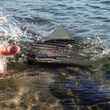






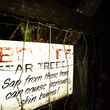



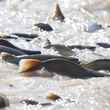




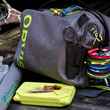




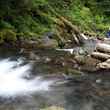



Comments
Anonymous replied on Permalink
A folded paper shop towel inside the fishing mask offers a little better filtration.
Larry replied on Permalink
Sad to hear that, but like you said wearing 'A mask' is better than no mask...besides...we look way cooler than those with real masks!
Jim in Conroe replied on Permalink
How about doubling a fishing mask by putting it on as usual, then folding the bottom up to make a double layer, or folding it again for "triple protection?"
I go with the "better than nothing" school of thought.
Natalie replied on Permalink
I am an RN, and use my gaiters by folding about 1/3 of the bottom into a pocket and insert a rectangle piece of the HEPA filter from vacuum cleaner bag. When pulling the mask off, fold from the bottom up, throw in the wash. Reuse filter by UV light from my epoxy fly tying Materials.
Pages